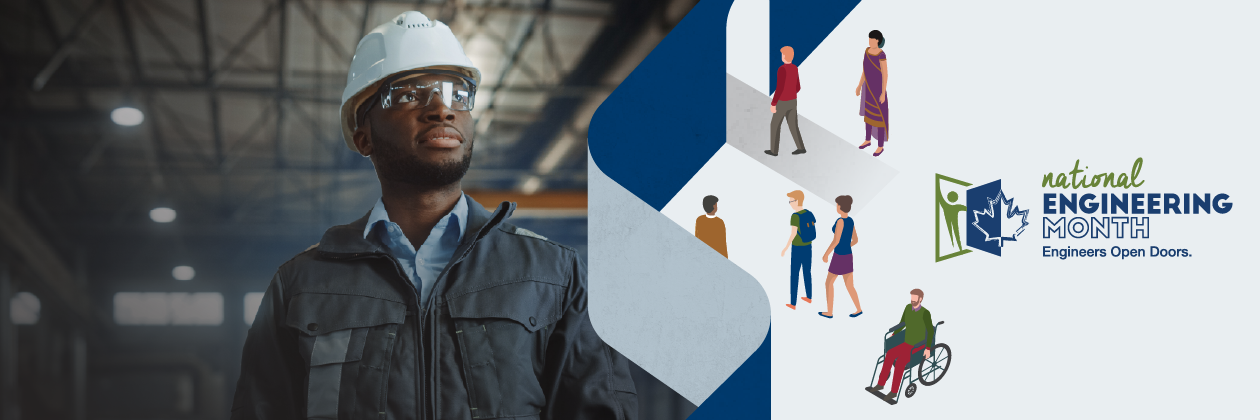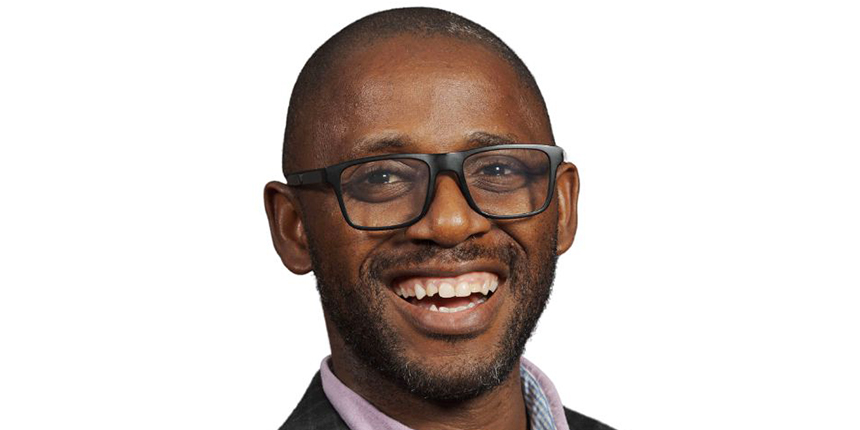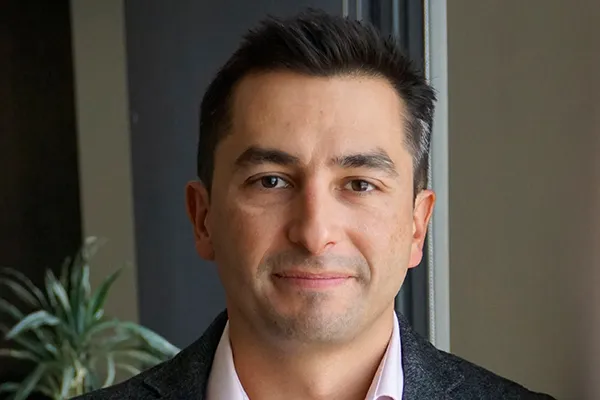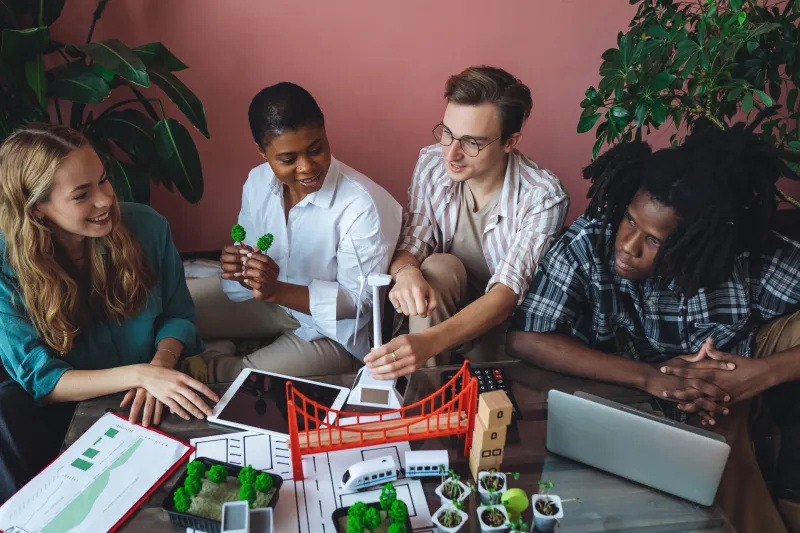

Ayo Daniel Abiola, P.Eng., CDP, PQS, says his drive to support sustainability in the building industry comes from both the past and the future.
“I’ve got two kids, right? So that's where I would start from, because my own motivation came from the legacy I got from my own parents, just looking at their life and the values they teach. And I realized that my effort has impact on my children’s future. Making sure there are more practitioners who understand sustainability means I'm creating opportunities for builders and thinkers and building a better world for my kids and their generation.”
Abiola holds a graduate degree in mechanical engineering, specializing in HVAC and building services. Currently, he works as a cost and carbon consultant for buildings and infrastructure with Hanscomb Limited’s office in Regina, SK.
His education and career as a mechanical engineer have opened the door for him to not only gain a deep understanding of the impact buildings can have on our world, but also to live his values.
“We have a lot of technologies and opportunities to make buildings better; we just have to apply them and invest in them. I was convinced that I have to play my part.”
Why sustainability?
Abiola is fascinated by buildings: “I find them vital and important and love to contribute to making them better.” His entire career, one way or another, has focused on them. He has spent time in consulting, academia, in nonprofits and advocacy, as a manufacturer’s representative for building equipment, and as a project manager for contractors. All these experiences have shaped his approach to engineering.
“You start to learn to think different. You start to understand and appreciate what matters: the human element, a lot of the social construct around buildings. I have been able to use that as a strength within engineering itself—being open to new knowledge.”
He watched the 2015 United Nations Climate Change Conference (COP21) proceedings closely, gaining a broader understanding of human-caused climate change that further motivated him to promote sustainable building materials and methods. He says it was heartening to realize he could be part of the solution, not part of the problem.
“Of course, we'll continue to provide the technology needed to support human basic needs—the population is growing, and will continue to need buildings, will continue to need spaces. But can we make them more sustainable?”
The answer, he says, is looking at the built environment from a systems approach. He teaches this key concept of systems thinking to professionals and leaders enrolled in an MIT (Massachusetts Institute of Technology) Professional Education course.
“We are not looking at one aspect of development or technology to optimize; we're trying to optimize across a broader system, and also look at all of the human elements around the physical: the environmental, social, and financial or economic impacts of what we're doing.”
Helping clients build more sustainably
At Hanscomb, Abiola advises clients who want to optimize the materials that go into a new building—especially mechanical systems like heating, cooling, and ventilation (HVAC) equipment, plumbing, or fire protection, which are responsible for most of a building’s operational greenhouse gas emissions. His goal is to help clients choose more reliable, efficient, and sustainable options.
“It's not uncommon for me to do a cost report and for the client to say, ‘We are really looking to dig deep into the environmental performance of this building; we would like to evaluate the cost of alternatives we can use to move us closer to that goal.’ The biggest success I see is being able to steer a client toward a sustainable solution.”
Abiola says the biggest barrier to adopting a sustainable approach to buildings is the upfront cost, so he tries to show clients what the total cost of ownership over the life of the building will be if more efficient and sustainable materials are used.
“If you have a mechanical service within your building that is using less energy, it means it is also more durable and will last longer. So over 40 or 50 years, you’re actually spending less. That becomes very, very attractive.”
Sustainable buildings begin with thoughtful, optimized design that minimizes materials use, because they will always be the biggest sources of carbon, through both their production and transportation to the building site. Abiola says sourcing materials locally also reduces the carbon footprint of a new building and offers many other benefits, including supporting the local economy.
“Global trade is good for getting things we cannot make ourselves or we cannot source, but if we are so dependent on things that are far away, then we are doing the world a disservice … Instead of importing finished products from outside, if they are manufactured here in Canada then it means local workers have the skills and the knowledge to continue to make them here.”
Emerging ideas and approaches driving sustainable building
One emerging idea of which Abiola is a big fan doesn’t involve construction at all, but rather deconstruction. He says the most sustainable buildings can be completely and carefully taken apart at the end of their life cycle, so their constituent parts don’t end up as industrial waste in a landfill, releasing harmful greenhouse gases.
“We don't want buildings that you have to put the wrecking ball to in the future. We can actually have buildings that are constructed to be dismantled piece by piece, with every part reused in the future. Today, you can do that with every new build you put on the ground, so in 50 years’ time, the people looking to decommission this building know exactly what to do with it.”
This approach requires careful planning and must begin early in the design process—as early as the initial concept, Abiola says.
“It's not something you think about when you start to put shovels to ground. It's something you actually start to think about the moment you think you're going to have a building. It will determine how you approach your consultants, your design team, your construction team, and your tradespeople.”
Another sustainable approach Abiola recommends is retrofitting older buildings, rather than demolishing them to build new ones. Using new materials creates more emissions and extracts more resources from the planet, while a retrofit uses far fewer materials and releases less carbon.
“Right now, the world has more than 2.5 trillion square feet of space that will be renovated in the next 30 to 40 years, globally. If we end up demolishing all of that, instead of renewing them, we are basically doing our goal for a carbon-free world a disservice, because we will be sending tons of material to landfill and resource extraction is going to balloon.”
Building the sustainability sector through collaboration and education
Abiola also spends a lot of his time collaborating with others through organizations like the American Society of Heating, Refrigerating and Air-Conditioning Engineers (ASHRAE), a global association of HVAC engineers. ASHRAE has invested heavily in educational resources that are helping to drive sustainable buildings that are good for both the environment and human occupants. The Regina chapter is currently planning to host its first BuildGreen Saskatchewan conference in fall 2025. Abiola is the chair of the planning team.
“We’re involving policy-makers, homeowners and builders, contractors, and academia. The goal here is to break down the silos and come together. The last thing you want to do as a sustainability practitioner is to stay in your own little bubble; to try to find solutions, you need to find a way to connect with others in the industry.”
Abiola also prioritizes knowledge-sharing, both with colleagues in the engineering sector and with those working in other industries and fields. He has delivered webinars for the Canadian Institute of Quantity Surveyors, offering training on carbon quantification and assessment for buildings, and teaches an online course for MIT on Sustainable Infrastructure Systems Planning and Operations, as part of their Sustainability Management certificate.
“Our understanding of low-carbon approaches is evolving, and so many practitioners are still struggling to move past the usual ways of doing things. For me, being able to support a growing number of practitioners who are seeking knowledge, to be able to deliver such advice, is a big win in itself, because the industry really needs them.”
Continuing to grow and support sustainable building approaches
Abiola says sometimes the work he and others in his field are doing feels like it’s moving the needle, but at other times the challenges feel huge. In the end, he believes they are creating change.
“If you look at the big picture and you step back, in the overall scheme of things, we've made impact. We've steered projects in directions that not only save the owners money today, but they’re also having a better impact on the environment… I may not be able to solve the problem for the entire world, but if I can help even one person, then I think I've made a difference.”
His plan is to keep on doing what he believes in: opening doors for others so they can join in the push for more sustainable approaches to buildings, and sharing the extensive knowledge and experience he has acquired throughout his career.
“I think being able to continue to support the industry is huge for me. I love the work I do within it, and I want to be able to build other talent to do what I do. That's really my big dream.”
More in this series

The engineering profession's continuing commitment to EDI

Amaury Camarena is using engineering to protect and preserve Canada’s coastal regions

Canadian Engineering Grand Challenges: How Engineers Can Support Sustainable Development Goals

